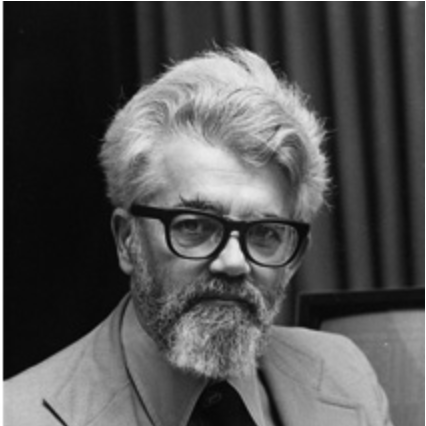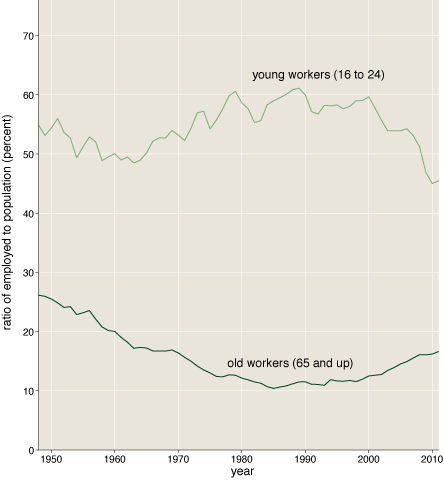Haµte Cuisine
by Brian Hayes
Published 6 August 2006
I can cook anything, as long as the recipe starts with “Take it out of the freezer” and ends with “Put it in the microwave.”
Go ahead and scoff, but I’m proud of my culinary accomplishments. Furthermore, I submit that the art of microwaving frozen foods is not without intellectual challenge. Inferior technique could leave some bits of your burrito still frozen while other parts are overcooked. The underlying cause of this well-known problem has lately been explored in depth and detail through computer simulations done by Motohiko Tanaka and Motoyasu Sato of the National Institute for Fusion Science in Toki, Japan. They present their results in an arXiv preprint.
The first mystery of microwave cookery is that it works at all. To heat a substance, you have to agitate the molecules, augmenting their random motions. Radiation at visible or infrared wavelengths does a good job of this: A visible or infrared photon is absorbed by a single molecule, which then goes bouncing off in some unpredictable direction. But microwaves are orders of magnitude too large and slow and weak to stimulate individual molecules. (In this respect the prefix micro is misleading; the wavelengths range from about a centimeter up to 10 or 20 centimeters.) A microwave’s energy is spread out over many millions of molecules—a situation that doesn’t seem like a very promising way to get them all moving in different directions.
One clue to how microwaves induce heating is what you’re not supposed to put in the microwave oven: aluminum foil. Metals have an abundance of free electrons, which are accelerated by the electric field of the microwaves. This field changes polarity a few billion times per second, and so the electrons slosh back and forth through the foil at that frequency. This motion of the electrons does not in itself constitute heating because it is not random; on the contrary, it is a highly organized oscillation—an alternating electric current. But the oscillating electrons collide with imperfections in the metal, and soon the orderly movement degrades into heat.
So much for tinfoil; most of us eat little in the way of metallic food. And nonmetals do not have an abundance of electrons (or other charged particles) free to move under the influence of an alternating electric field. What foods have is water. Although the H2O molecule is electrically neutral, it has positive and negative poles, where opposite charges congregate (most of the positive charge on the hydrogen atoms, most of the negative charge on the oxygen). When this dipole structure is immersed in an electric field, it takes up a preferred orientation, antiparallel to the applied potential. Since the microwave field changes direction at a frequency of a few gigahertz, the water molecules must continually flip or spin to keep pace. As with the sloshing of the electrons in tinfoil, this rotation of the water molecules can’t be considered heat because it’s too orderly; all the molecules are twirling in synchrony. But in liquid water the molecules are tightly packed, and as they spin they bump into one another like dancers on a crowded floor. These collisions randomize the motion, and so the temperature of the water rises.
Tanaka and Sato study this process in a simulated volume of water measuring about 40 Ångstroms on a side and containing about 2,700 water molecules. The molecules are attracted to one another through electrical forces, but there’s also a “hard core” repulsion that prevents them from getting too close. In the simulation, all of the forces acting on each molecule are recalculated every femtosecond (10–15 second), after which the positions and orientations of the molecules are updated. The system is allowed to come to equilibrium at a specified temperature during an initialization phase that lasts for a simulated time of 100 picoseconds (100 × 10–12 second), and then the microwave field is turned on for 500 picoseconds. Tanaka and Sato use an unrealistically intense field—about a million volts per centimeter—in order to speed up the process. (Although the simulated time is only about half a nanosecond, the actual running time on a cluster of four-processor Pentium workstations is 48 hours.)
In liquid water at 300 Kelvins (roughly room temperature), Tanaka and Sato find that microwave heating is quite efficient: The colliding, spinning molecules raise the temperature to about 350 Kelvins. But here’s the problem: In ice, unlike liquid water, Tanaka and Sato see almost no heating. The reason is that water molecules in an ice crystal are immobilized by strong electrostatic bonds, and microwaves have too little energy to break them free. In the oscillating microwave field, the ice molecules wobble back and forth a bit, but they cannot twirl, and thus they cannot collide. Tanaka and Sato don’t explicitly discuss the culinary implications of their work, but the inference is obvious: It’s because of this icy recalcitrance to microwaves that nuking a frozen burrito takes as much skill as baking a perfect soufflé or whipping up a sauce Bearnaise.
Interestingly, microwaves also lose much of their sizzle when water is superheated to 400 Kelvins. Under these conditions, the water molecules are easily set to spinning, but the bonds between them are so feeble that the rotation is not converted into random, thermal motion. I am tempted to see a certain philosophical significance in this curious behavior. There’s been much written about the specialness of the water molecule—most notably the geometric quirk that makes solid ice lighter than liquid water. If it were otherwise—if rivers and lakes and oceans could freeze from the bottom up—life would have had a hard time getting established on planet Earth. Now we know that modern slacker civilization also depends on a peculiarity of the water molecule. If we didn’t have this glorious interval of susceptibility to microwaves in a narrow window of temperatures near 300 Kelvins, I’d have to survive on Poptarts in the toaster oven.
Responses from readers:
Please note: The bit-player website is no longer equipped to accept and publish comments from readers, but the author is still eager to hear from you. Send comments, criticism, compliments, or corrections to brian@bit-player.org.
Publication history
First publication: 6 August 2006
Converted to Eleventy framework: 22 April 2025



Great exposition on one of the key mysteries of life, Brian! (And though I first thought the title a bit twee, I’ve now come to appreciate the care you took to give that mu its orthographic spotlight.)
I agree with the previous comment… great, great exposition indeed.
I am a regular reader of this blog, and I think this is one of the best posts ever. Congratulations! I hope you write more often about physics ;-)